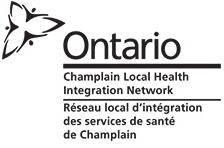
Breathing
Breathing is an essential life process that human beings do, and many of us do this automatically without even thinking about it. But did you know that there are different ways to breathe?
Belly Breathing (aka Diaphragmatic) versus Chest Breathing.
The best type of breathing is belly breathing (aka diaphragmatic breathing). This is when you take a deep breath, relying on your diaphragm and your belly, as opposed to just on your chest.
Unfortunately, many people get into a habit of breathing with their chests, due to many reasons such as poor posture, tight clothing, and stress.
Deep, slow breathing vs. Shallow, fast breathing
It is best to have slow paced breathing. This helps calm down our nervousness so that we can function best.
How important is this?
Being in control of our breathing is very important, and can be critical in high performance, emergency or even life and death situations.
This is why deep, slow paced breathing is purposely taught in professions such as with athletes, first responders (such as police officers, paramedics), target shooters and those in the military.
The good news is that anyone can benefit from these techniques, which is why they are also part of yoga, and other health conscious practices.
Step 1: Breathe Through Your Belly (Diaphragm) Not Your Chest
Am I a Belly Breather or a Chest Breather?
Try this exercise to see if you are a belly breather or chest breather.
|
Sit down comfortably |
|
|
Put a hand on your chest |
|
|
Put a hand on your belly |
|
|
Breathe in through your nose
|
|
|
Breathe out through your mouth
|
|
|
Do this a few times |
What did you notice?
- Notice your chest moving much more than your belly? → This may mean you are a chest breather. No worries, you can practice belly breathing.
- Notice your belly moving much more than your chest? → This suggests you may be a belly breather.
Step 2: Breathe Deeply and Slowly
There are many types of deep breathing. Here are some examples:
1. Box breathing
- Breathe in for four counts
- Hold your breath for four counts
- Breathe out for four counts
- Hold your breath for four counts
- You just completed one deep breath.
- Repeat.
Box Breathing Animation

2. Triangle breathing
- Start at the bottom left of the triangle.
- Breathe in through your nose for three counts as you trace the first side of the triangle. Try to start with your belly expanding and as you breathe in, bring it up to open your chest.
- Hold your breath for three counts as you trace the second side of the triangle.
- Breathe out through your nose three counts as you trace the final side of the triangle.
- Congratulations, you’ve just done one deep breath.
- Repeat!
Variations on Deep Breathing
Are you finding that the above types of breathing exercises don’t work for you? No worries, there are other types of deep breathing such as:
Alternate Nostril Breathing
Special thanks to YogaTailor.com for the animated gif

Practice, Practice, Practice
Try practicing one of these breathing techniques at least 5-minutes a day, during a time when you are calm and relaxed.
After you have practiced this enough, then it will be easier to do while stressed out, in order to keep calm, in order to help you sleep, etc.
Frequently Asked Questions (FAQs)
Q. Why is breathing through the nose important?
When we breathe in through the nose, it helps calm our nervous system, in a way that doesn’t happen when you breathe in through the mouth.
Q. What if my nose is blocked?
Is your nose blocked?
- Try blowing your nose a few times and see if this helps.
- Consider using a “saline wash” or using a Neti pot.
- Consider seeing a doctor to see if there might be some other physical reason.
Still can’t unblock your nose?
- When you breathe, do it very slowly through your mouth.
Q. Which is more relaxing, breathing in slowly or breathing out slowly?
It turns out that it is the exhalation phase which is particularly important for calming, so try to take a second or two longer for the exhalation.
For More Information
Deep Breathing Animations
There are many deep breathing animations out there. Here is one deep breathing GIF:
https://media.giphy.com/media/krP2NRkLqnKEg/giphy.gif
Anxiety Canada
https://www.anxietycanada.com/
Free Breathing Apps (English)
| Program |
What is it for? |
Who is it for? |
|
|
|
HealthyMinds By Royal Ottawa Mental Health Centre Problem-solving tool to help youth and young adults deal with emotions and cope with the stresses you encounter both on and off campus. http://www.theroyal.ca/mental-health-centre/apps/healthymindsapp/ |
Stress |
Youth/young adults |
|
|
MindShift CBT By Anxiety Disorders Association of British Columbia in collaboration with BC Children’s Hospital. For coping with anxiety -- breathing exercises, a symptom checker to help rate your current anxiety, and steps to get you through difficult episodes or situations. |
Anxiety, sleep problems |
Youth/ young adults |
|
|
Calm Awarded Apple's "App of the Year" in 2017. Designed to reduce anxiety, improve sleep, and help you to feel happier. Calm focuses on the four key areas of meditation, breathing, sleep, and relaxation, with the aim of bringing joy, clarity, and peace to your daily life. |
Relaxation, meditation, anxiety, sleep |
Youth / adults |
|
|
Tactical Breather By the National Center for Telehealth & Technology Designed for soldiers, teaches breathing as well as other strategies to gain control over heart rate, emotions and concentration in stressful (e.g. combat situations. |
Staying calm and focused under stressful situations |
Adults, originally for soldiers |
Free Breathing Programs for Children
|
Program |
What is it for? |
Who is it for? |
|
|
MindMasters is a program developed to teach resiliency skills in children/youth. It has sections on deep breathing. |
Relaxation, meditation, anxiety, sleep |
Children |
Authors
Written by the eMentalHealth.ca team. Special thanks to Audrey McMahon, Psychiatrist and Yoga Instructor; Melodie Dupuis of the Peer Helper Network.
License
You are free to copy and distribute this material in its entirety as long as 1) this material is not used in any way that suggests we endorse you or your use of the material, 2) this material is not used for commercial purposes (i.e., usage must be non-commercial), 3) this material is not altered in any way (i.e., no derivative works). View full license at http://creativecommons.org/lic…
Disclaimer
Information in this fact sheet may or may not apply to you. Your health care provider is the best source of information about your health.






